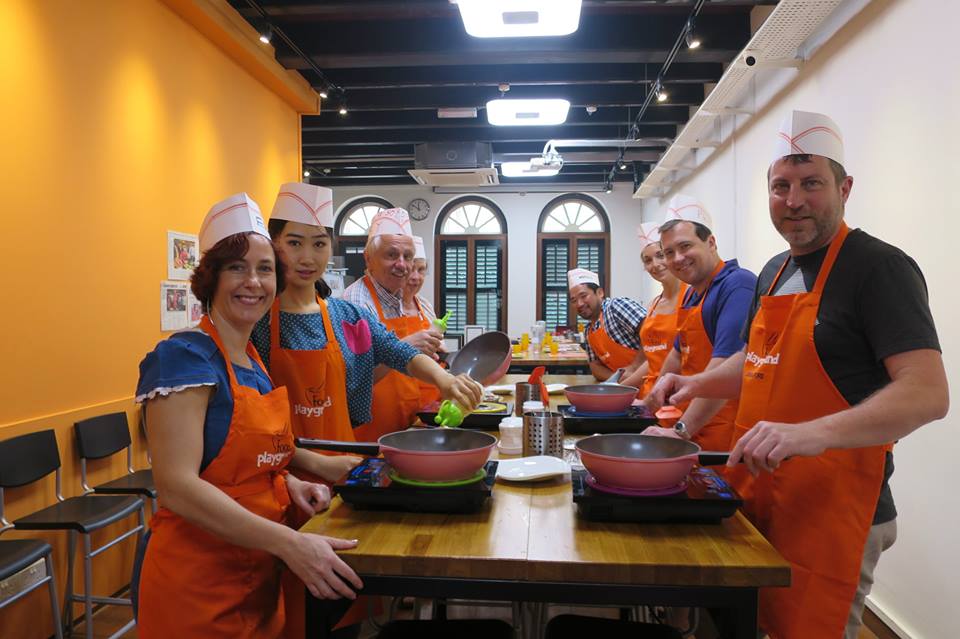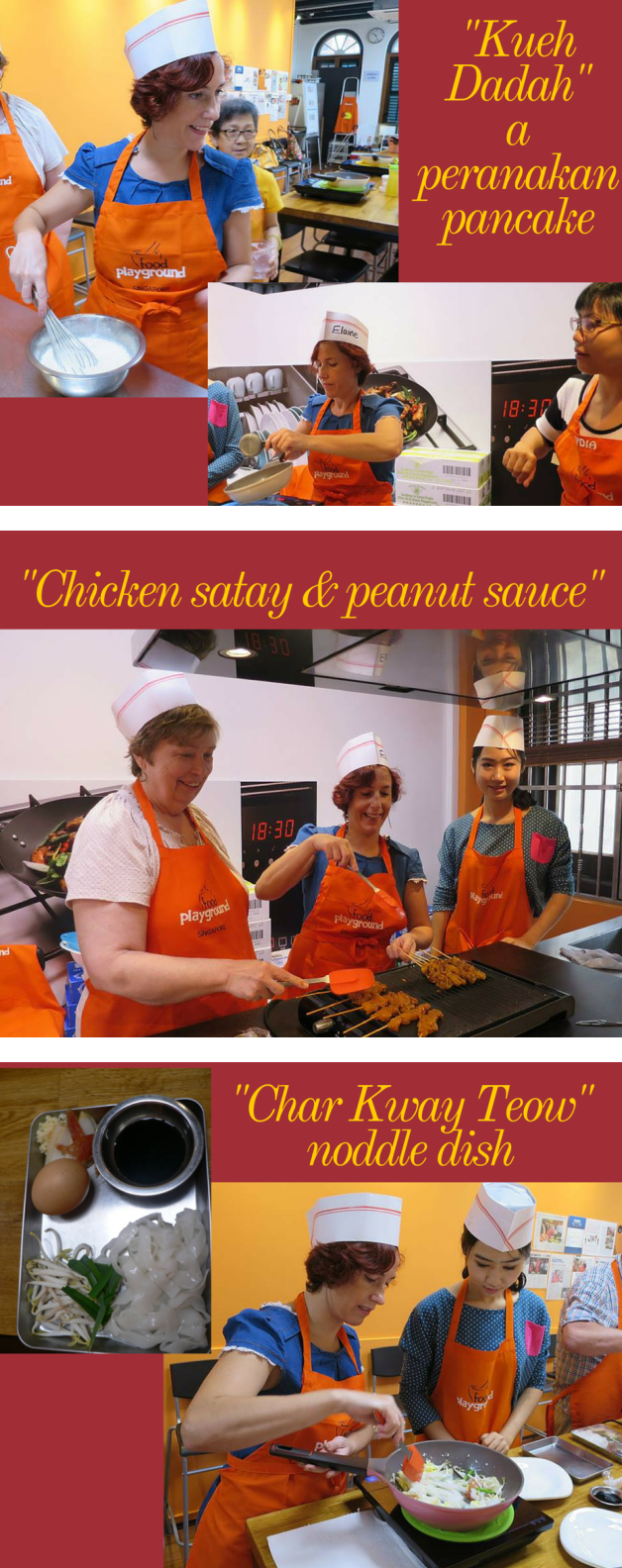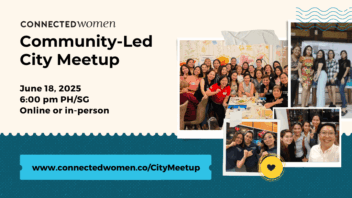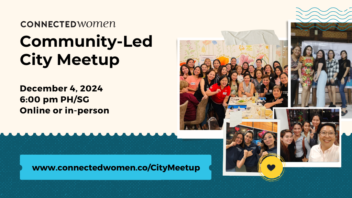Mrs F Asks: Who Wants To Learn To Cook Like A Local?
 Contributed by
Elaine Friedlander
August 28, 2015
Contributed by
Elaine Friedlander
August 28, 2015

The more I cook, the more I learn about people and places. Food Culture helps define us. Take me as an example, I can happily cook a full Sunday roast: leg of lamb, roast potatoes, cauliflower cheese, vegetables, and Yorkshire puddings to boot. I can just as easily (!) cook a mean nonya chicken curry or beef rendang. These dishes speak volumes about my identity as a Brit who grew up in Singapore. I like being a bit different from your usual Britmum, and I feel like a little part of me belongs to these tropical shores.
So what better way to learn about a country and culture than through their food? Which is precisely what social enterprise Food Playground is doing here for visitors and residents alike. I was lucky enough to be invited along to Food Playground to try one of their cultural cookery classes on National Day weekend. My Singapore feel-good-factor really kicked in!
Why I’d Recommend Food Playground
I’d recommend Food Playground to any visitors, expatriates or Singaporeans wanting to connect their tummies and their minds with Singapore food traditions. Located at Sago Street in the heart of Chinatown, even Food Playground’s shop-house exudes culture and tradition. Before attending the class there were some essential local dishes missing from my culinary repertoire. Now when the call to relocate comes, at least I know char kway teow, chicken satay and peanut sauce and kueh dadar are just a flash in the pan away. Plus it was just a lot of fun. My classmates were friendly, funny and relaxed. Lydia and Lena were knowledgeable, engaging and got us involved in cooking from the start. Food Playground can cater for individuals or couples wanting to join a class (that’s what I did), groups of friends or corporate team building days. Just drop Lena a line if you are you’d like to find out more.
What We Did On The Day

The session started with a quick round the table hello, and we all said why we were there and what we hoped to get out of the day. We then had a pop-quiz to see how good our local food knowledge was starting with ‘name that dish’. 3 out of 2 for yours truly, not bad for an Ang Mo eh?
Then on with the cooking. We started with kueh dadar, which we learnt means bite-size sweet snack or dessert in Malay. Emphasis on the small. We were making a pandan and coconut crepe filled with coconut cooked in palm sugar. After a classmate had pulped and squeezed fresh pandan leaves to extract the essence, I whisked up the batter. Similar to a European crepe, the batter is runny and the frying a fiddly business. Lydia talked us through correct thickness, swirling your batter, and what signs to look for that show the crepes are cooked. Once removed from the pan, you place a teaspoon or so of coconut filling in the centre and roll them up like spring rolls. The crepe gets a bit tacky as it cools and adheres to itself which is handy (or not if you roll it wrong!). Mine looked pretty good and my classmates were kind enough to say so (my head no longer fits in my chef hat).
Next, that all-time classic, chicken satay with peanut sauce. The chicken meat had been partly pre-marinated to ensure the flavours infused sufficiently. In pairs we chopped and pounded the remaining ingredients to finish the marinade, and then cooked the peanut sauce. Lydia explained the virtues of home-roasting and crushing peanuts freshly for the sauce. We all inhaled deeply from her pot of home-roasted-crushed peanuts. OMG it smelt divine. And the sauce was fabulous, so I won’t be skimping on this part of the recipe in future.
Lastly char kway teow. A historic local dish with humble origins. A high calorie meal of cheap and readily available ingredients, and historically for the labouring man or woman. In days of old, cockles would be thrown in as they were cheap and abundant. It’s important that the wok is hot for this one and so olive oil is NOT a good oil to use as its boiling temperature is too low. You can use vegetable oils, I recommend Grapeseed oil which has similar health benefits to olive oil but a much higher boiling temperature.
Cultural Titbits
During the day I also learnt that a person can only call themselves Peranakan if they are a direct descendant of Chinese migrants who settled in Singapore and married local Malay women. Peranakan food is a result of this cultural fusion.
And once all that cooking was complete, we got to EAT! Yum. So much fun and good to eat too.
A Bit More About Food Playground
The social mission behind Food Playground is to create meaningful and dignified employment opportunities for seniors and stay-home mothers by hiring them as cooking instructors and helpers. By doing this, we effectively help them monetize their knowledge and passion in cooking for sustainable income and better social engagement which is becoming increasingly relevant given our rapidly ageing population and challenges in getting mothers back into the workforce.
Classes are available Monday to Saturday, 9:30am to 12:30pm. Bookings can be made online. Menus vary per class. Please check details of the date you are interested in online. Book early to avoid disappointment.
Disclosure: I was invited to attend a complimentary Saturday session at Food Playground in return for this review. My opinions are my own, and I try to be objective. Plus I always follow my mum’s advice which is…“if you don’t have anything nice to say, don’t say anything at all”. As you can see, I have plenty of nice things to say about Food Playground.
Did you enjoy this post? Please comment, like and share!
Lifestyle











Sorry, the comment form is closed at this time.